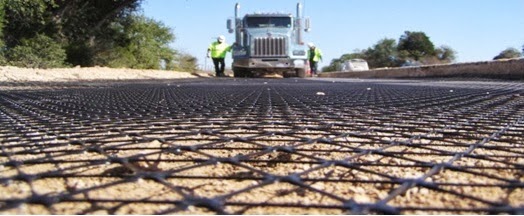Table of Contents
ToggleIntroduction
In the realm of civil engineering and environmental sustainability, Geosynthetics emerge as unsung heroes, weaving innovation beneath the surface. “Beyond Borders: Unraveling the Potential of Geosynthetics” invites us to embark on a journey exploring the multifaceted world of these synthetic materials, unraveling their vast potential and transformative impact on infrastructure and environmental resilience.
Understanding Geosynthetics
What are Geosynthetics?
Geosynthetics refer to synthetic materials used in civil engineering and environmental applications. These versatile materials include geotextiles, geogrids, geomembranes, and geocomposites, each designed to address specific challenges in construction, soil stabilization, and environmental protection.
Weaving Solutions: The Role of Geosynthetics
Geosynthetics act as silent reinforcements, enhancing the performance and longevity of various civil engineering structures. They provide solutions to challenges such as soil erosion, slope stability, drainage, and environmental containment.
The Geosynthetics Revolution in Civil Engineering
Reinforcing Foundations: Geotextiles in Soil Stabilization
Geotextiles, a fundamental component of geosynthetics, play a pivotal role in soil stabilization. Whether used to reinforce embankments or control erosion, these textiles provide a reliable and cost-effective solution for enhancing the structural integrity of foundations.
Bridging Gaps: Geogrids in Infrastructure Development
Geogrids, with their high tensile strength, find applications in reinforcing retaining walls, stabilizing slopes, and even in the construction of roadways and railway embankments. The integration of geogrids in infrastructure projects enhances load-bearing capacity and reduces maintenance costs.
Containment Excellence: Geomembranes in Environmental Protection
Geomembranes, impermeable synthetic membranes, find use in environmental containment applications. From landfill liners to wastewater treatment facilities, these membranes prevent the migration of contaminants, safeguarding ecosystems and water resources.
Innovative Composites: Geocomposites Revolutionizing Construction
Geocomposites, combining different types of geosynthetics, offer innovative solutions. Their applications range from drainage systems in landfill sites to reinforcing pavements, showcasing the adaptability and versatility of geosynthetic composites.
Geosynthetics and Environmental Resilience
Green Solutions: Sustainable Practices with Geosynthetics
The eco-friendly nature of geosynthetics contributes to sustainable construction practices. Their use reduces the need for natural resources, minimizes environmental impact, and aligns with the global shift towards green infrastructure.
Mitigating Natural Disasters: Geosynthetics in Disaster Management
Geosynthetics play a crucial role in disaster management, offering solutions for flood control, soil stabilization, and protection against natural calamities. These materials enhance the resilience of infrastructure in vulnerable regions, mitigating the impact of disasters.
Case Studies: Geosynthetics in Action
Iconic Projects: Geosynthetics at the Heart of Engineering Marvels
Explore real-world applications of geosynthetics in iconic projects. From the reinforcement of dams to the construction of highways, these case studies demonstrate the effectiveness and adaptability of geosynthetics in diverse environments.
Innovations and Future Trends
Cutting-Edge Advancements: The Future Landscape of Geosynthetics
Delve into the latest innovations reshaping the geosynthetics industry. From smart geotextiles with embedded sensors to advancements in biodegradable materials, the future promises even more sustainable and technologically advanced solutions.
Challenges and Considerations
Navigating Challenges: Addressing Concerns in Geosynthetic Applications
While geosynthetics offer myriad benefits, understanding and addressing potential challenges is crucial. Explore considerations related to durability, installation, and long-term performance to ensure the optimal use of these materials. While geosynthetics offer myriad benefits, understanding and addressing potential challenges is crucial. Explore considerations related to durability, installation, and long-term performance to ensure the optimal use of these materials.
Conclusion: Embracing the Geosynthetics Frontier
As we conclude our journey “Beyond Borders: Unraveling the Potential of Geosynthetics,” it becomes evident that these synthetic materials are not just components in construction but essential elements shaping the future of civil engineering and environmental sustainability. Embracing the geosynthetics frontier opens new possibilities for resilient infrastructure, sustainable practices, and a harmonious coexistence with the environment. As technology advances and innovations continue to unfold, geosynthetics stand poised to play an increasingly significant role in building a robust and sustainable world for generations to come.




